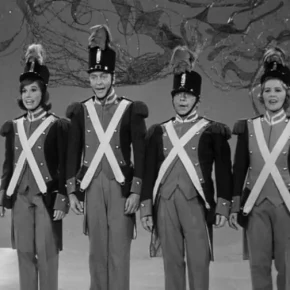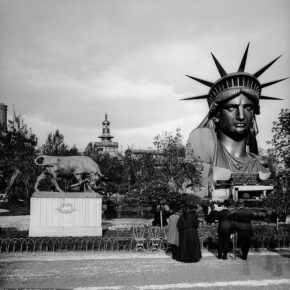If you’ve flown in the U.S. in the past few years, you know the drill:
- Whip out ID and boarding pass
- Answer five-or-so questions about your luggage
- Have a TSA agent dust your bags for explosive residue
- Get in a long line for mag & bag
- Present your ID and boarding pass again
- Remove your shoes, belt, watch, keys, change, etc., before you go through the metal detector
- Take out your laptop or camcorder from your packed-to-the gills carry-on bag
- Walk through the metal detector and be stared at like you’re a thief.
- Go through the air-puffer to be tested for “suspicious materials on your person” (optional)
- Watch your bag go through the X-ray while agents pay it only cursory glances
- Get a full-on bag search and wanding (optional, if you are flying last-minute
And you can now add to that list:
- Dispose of all liquid-based items in your carry-on bag, other than infant formula and prescription medications.
- Be forced to check all electronic devices, including laptop computers, mobile phones, DVD players, iPods, CD players (if flying from the UK)
- Be forced to check all other “non-essentials,” including books, toothbrushes, and so forth (again, if flying from the UK)
The way things are going, the parody “prophesy” of Tony Hendra’s 1989 book, The 90’s: A Look Back, will come true: we’ll all be flying in the nude.
A few choice words for this so-called security:
IT DOES NOTHING TO PREVENT TERRORISM OR TERRORIST ATTACKS!
It is, to put it bluntly, a dog & pony show that does nothing to prevent actual terrorist activities. Sure, it looks like security is doing something, but it really isn’t. A determined terrorist – either solo or in a group – will carry out his or her plot without any care of what the TSA agents are doing to “prevent disaster.”
It simply looks “good” on TV, or to Ma and Pa Kettle – but in reality, it achieves next to nothing in terms of prevention.
Don’t believe me? Ask a pro or two:
- Patrick Smith, a profesisonal pilot who runs AskAPilot.com and writes for Salon, says that all of the Department of Homeland Security and TSA changes do nothing to improve in-flight or on-ground safety. In fact, he notes, a cursory glance at anti-terrorist programs reveals a similar plot to use liquid-based explosives to bring down 11 intercontinental flights – back in 1995:
[T]he sinister plan, nicknamed “Oplan Bojinka,” is under the direction of Ramzi Yousef and Khalid Sheikh Mohammed, a pair of terrorist conspirators hiding out in Manila, Philippines. Khalid would later lead the Sept. 11 attacks on New York and Washington. Yousef was already responsible for having organized the World Trade Center prelude bombing in 1993….
At one point he completed a successful Bojinka test run onboard a Philippine Airlines 747, killing a Japanese businessman with a small underseat explosion. Yousef himself, traveling with a forged Italian passport, smuggled the necessary components onto the airplane, including nitroglycerin hidden inside a converted bottle of contact lens solution.
Filipino police uncover the Bojinka plot from a Toshiba laptop in Yousef’s Manila apartment, also used as an explosives lab, after they are called to the scene because of a chemical fire. It is two weeks before the attacks are scheduled to take place. Yousef flees to Pakistan and is arrested in Islamabad six weeks later by Pakistani and American intelligence officers.
According to the data in Yousef’s computer, and later revealed during his trial, 11 jetliners, all belonging to U.S. airlines and all traveling between Asia and the United States, were to be targeted over a two-day period in January 1995. A team of operatives would carry aboard small but powerful explosive devices separated into various, seemingly innocuous components. Called “microbombs,” the devices would employ Casio watches for timers and chemical stabilizers that resembled cotton balls. A pair of 9-volt batteries would provide power to detonators fashioned from light bulb filaments. The key explosive was a virtually undetectable form of liquid nitroglycerin. After assembly during flight, the bomb would be placed beneath the chair cushion, concealed by the underseat life preserver.
Each of the 11 chosen targets was a two-leg flight. The conspirators planned to disembark upon landing, with the bombs set to detonate hours later, after the planes were once again aloft. If successful, more than 3,000 people could have been killed.
Looks familiar, doesn’t it? Yet in 1995, the U.S. government didn’t raise peoples’ hackles and scare them out of their wits. Instead, the matter was handled in a calm, professional manner – the way the British and Pakistani governments carried out the arrests of the current terror suspects.
Or maybe the FAA and the government didn’t learn anything, after all. Smith takes note of this:
All of this happened more than 11 years ago, providing more than ample notice that such a scheme was possible. Yet following revelations that a copycat Bojinka scheme was well under way in Britain, we’re suddenly in a state of full-blown panic.
Smith’s article is well-researched and is worth reading – it’s even worth sitting through Salon’s day-pass advert. In fact, many of his other articles are well worth a read, too.
- Rafi Ron, former head of security at Tel Aviv, Israel’s, Ben Gurion International Airport, argues that the TSA’s methods of screening don’t actually target terrorists. In an article by the AP and CNN, Ron says:
“It is extremely difficult for people to disguise the fact [terror suspects] are under tremendous amount of stress, that they are going to kill themselves and a lot of people around them in a short amount of time, and all the other factors that affect their behavior.”
Note that, under Ron’s watch, there were no terror attacks on flights that originated from Ben Gurion Int’l Airport.
Additionally, other flight industry experts are scratching their heads about the TSA’s knee-jerk reaction, and many well-informed travelers are infuriated at this symbolic action that, in the eyes of Patrick Smith, achieves the same amount of security improvement as did the shoe screening after Richard Reid’s shoe bomb scare: there’s no real change. Smith concludes:
Ultimately, protecting commercial aircraft from terrorism is not the job of airport security, it’s a job for police departments, federal law enforcement and intelligence agencies. The apparent plot at Heathrow Airport was not unraveled by the keen eye of a concourse screener; it was unraveled through careful investigation behind the scenes. By the time any attacker makes it to the metal detector, chances are it’s already too late. There are too many ways to outwit that final line of defense.
No matter, here we go initiating yet another absurd crackdown to the detriment of millions of innocent travelers. Just as confiscating corkscrews didn’t make us safer after Sept. 11, so banning liquids isn’t going to make us safer now. All the while, the true weapon of mass destruction is the imagination and resilience of those who wish to harm us — a fact we continue to ignore at our own peril.
And yet the mainstream mass media seems to listen only to the TSA’s talking points, filming hours upon hours of footage of people standing in long security lines, unquestioning in their disposal of liquids, removal of shoes, etc., buying into the whole “this is for our safety” meme. I wonder how many interviewees say “this isn’t safety – it’s window treatment bullshit” – I can’t be the only one, right?
So since September 11, 2001, has the Bush administration done anything substantive to improve security for the United States? In my eyes, he hasn’t – if anything, his ridiculous and ill-advised military actions, diplomatic blunders, and insults to the rest of the world have made the U.S. far less secure than it was on September 10, 2001.
(Furthermore, Bush undermines a huge GOP voting block – the military – by under-equipping the troops and by eroding their funding by cutting the tax revenue base of the government while running record-breaking deficits. I truly wonder why military soldiers and their families continue to vote for the Republicans, given the complete cold shoulder treatment they’ve seen from BushCo.)
To put this entire TSA reaction into more poetic summary, let’s look at the words of The Bard:
It is a tale told by an idiot
Full of sound and fury
Signifying nothing.
MacBeth, Act 5, Scene 5













Comments by randomduck
virtual advent 2020: a fab holiday (and it’s been 40 years…)
@compassionknit: I think the issue is that John had Julian ...
ten on tuesday: the music died too young
Good call on those three!
my 30s: a look back
Thanks, Darren and Jeff! Jeff, riding along the California coast with ...